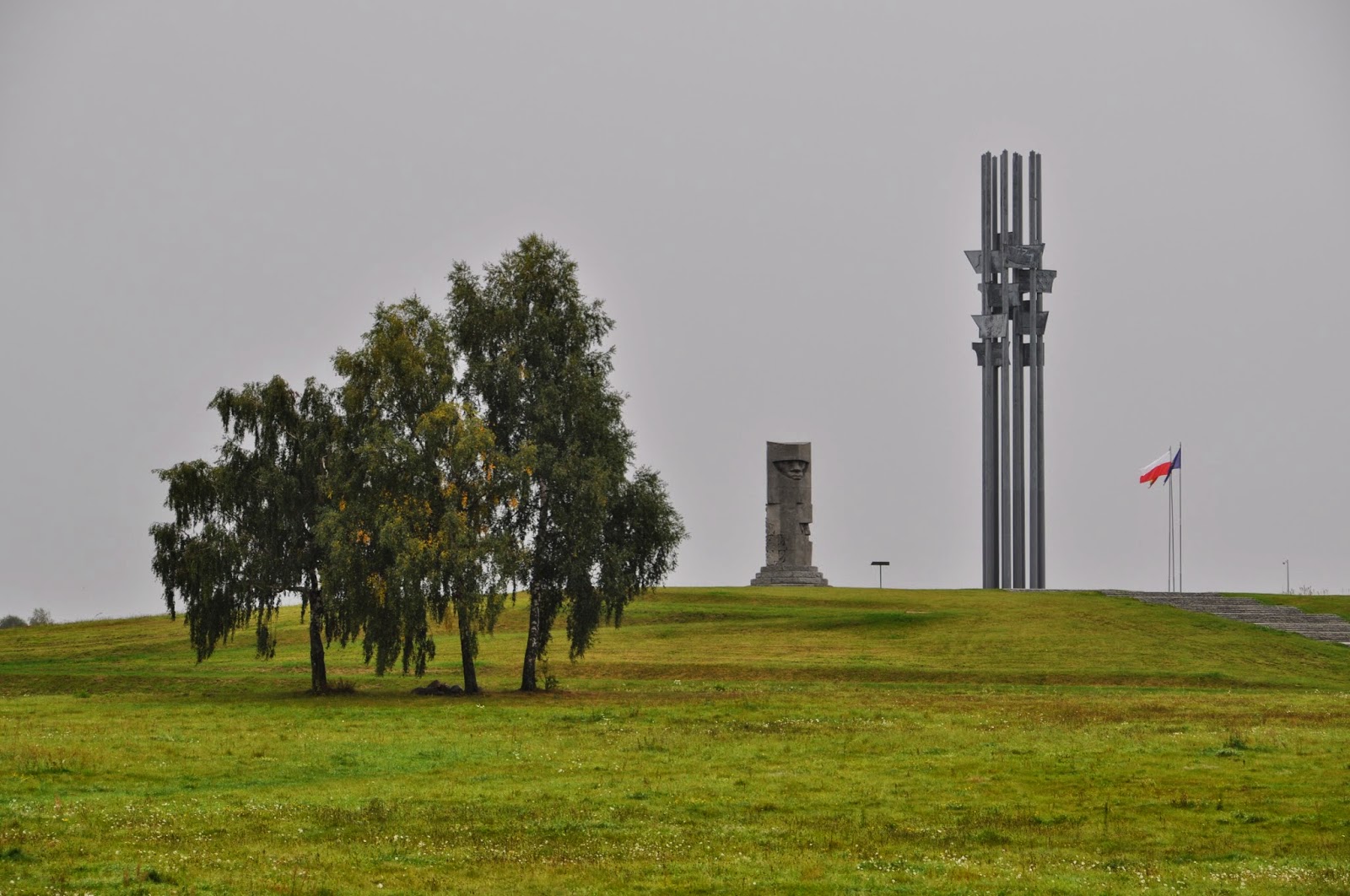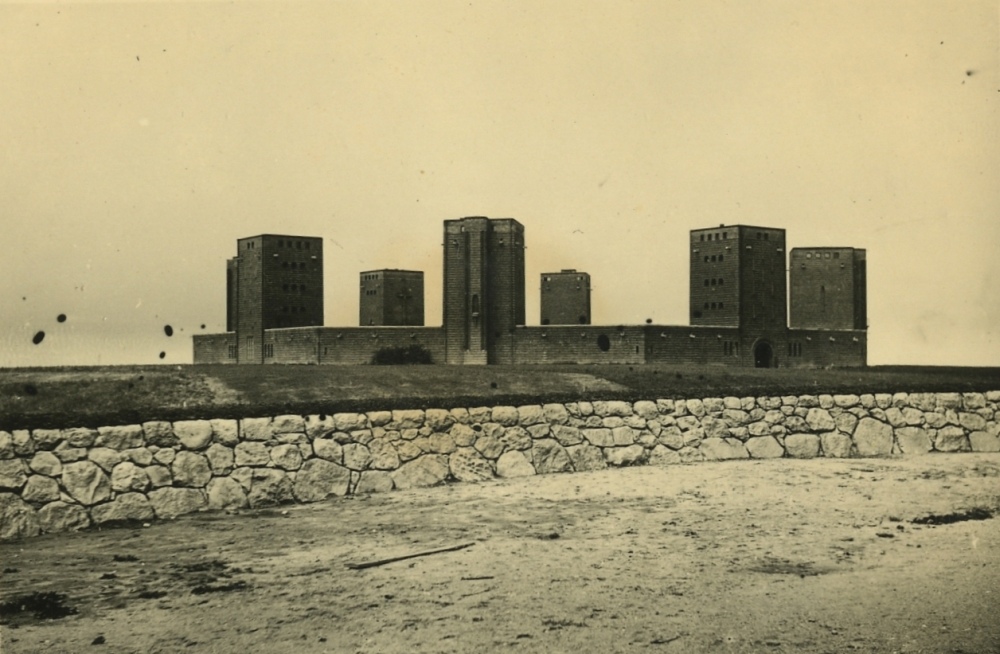
Hindenburg was originally buried in the central yard or "plaza" of the monument on 7 August 1934. The concourse grass was replaced with stone and around the memorial landscape were placed (historically inaccurate) interpretations of the Aryan German presence in East Prussia since the stone age. A porphyry statue of the victor, by the East Prussian Friedrich Bagdons, dominated the Hall of Honour above the tomb.

Two giant stone soldiers (as if on guard) were placed outside the tomb. This stone was so large that railway bridges had to be strengthened to aid its transportation. To add to the theatre, the government of the Reich again called upon the architectural firm of Krüger in Berlin and using the Stonehenge parallel again above the entrance, a giant stone (symbolically from Königsberg) was placed, with the Field Marshal's name inscribed upon it. Modernisation of the memorialįollowing the interment of Hindenburg, the memorial once again became a national shrine. Following a torch-lit route and escorted by infantry and cavalry, the cortège made its way to Hohenstein.

It began with the transportation of the deceased president in the dark of night, on a gun carriage, from Hindenburg's East Prussian home Neudeck. However, Hitler decided to seize the opportunity for propaganda and instructed Albert Speer to ensure that the day was spectacular. Hindenburg had requested a simple service and that he be interred next to his wife (who had died in 1921) in Hanover. Among those attending were Adolf Hitler, Hermann Göring, Franz von Papen and Erich Koch, East Prussia's Nazi gauleiter.Ī year later, the monument again came to prominence on the death of Paul von Hindenburg. In August 1933 the Nazis held a massive demonstration at the memorial to commemorate the anniversary of the battle.The Polish government allowed 1,500 cars to transit through the Polish Corridor. The numbers of visitors did not meet expectations initially but during the Nazi era the numbers were such that the inn required an extension. The architects had also built an inn nearby in traditional East Prussian style. A line of veterans, ten kilometers long and resplendent in Imperial uniforms, paid homage to Hindenburg and the 20 unknown German soldiers from the 1914 battle who were interred at the memorial. An extract from the speech was later carved into a bronze plaque by the Nazi regime and installed in one of the towers of the memorial. His speech was deemed highly nationalistic and in keeping with the times for the Weimar Republic, but was not well received outside Germany since it denied German responsibility for the war.

The 80-year-old Hindenburg was dressed in the uniform of a Colonel-in-chief of a Masurian regiment to which he'd been appointed by the Emperor (who had since abdicated). Opening and dedicationĪ gathering of thousands came to the dedication of the newly finished memorial on 18 September 1927. The design influenced other projects undertaken by architects and builders during the era. The monument's location on a hilltop was accentuated by massive earthworks and landscaping designed to look as if nature alone had shaped the site. The memorial was built in a prominent place in a shape reminiscent of the castles of the Teutonic Knights. The architects imagined the memorial to be a new völkisch "community of the dead" and incorporated the burial of 20 unknown German soldiers from the Eastern Front into the project concept. This ideology was debated in Germany in the 1920s and 1930s. In doing so, the architects anticipated the concept of Totenburgen (Fortresses of the Dead) housing mass graves of soldiers. The memorial embraced the Anglo/French concept of the Unknown Soldier. In 1949, Polish authorities razed the site, leaving few traces. As the Red Army approached in 1945, German troops removed Hindenburg's remains and partly demolished key structures. Adolf Hitler ordered the monument to be redesigned and renamed "Reichsehrenmal Tannenberg". When Reichspräsident Hindenburg died in 1934, his coffin and that of his wife, who had died in 1921, were placed there despite his wishes to be buried at his family plot in Hanover. The octagonal layout with eight towers, each 20 metres high, was influenced by Holy Roman Emperor Frederick II's Castel del Monte and Stonehenge.

The victorious German commander, Generalfeldmarschall Paul von Hindenburg, became a national hero and was later interred at the site.ĭedicated by Hindenburg on the 10th anniversary of the Battle of Tannenberg in 1924 near Hohenstein (Ostpreußen) (now Olsztynek, Poland), the structure, which was financed by donations, was built by the architects Johannes and Walter Krüger of Berlin and completed in 1927. The Tannenberg Memorial was a monument to the German soldiers of the Battle of Tannenberg, the First Battle of the Masurian Lakes and the medieval Battle of Tannenberg (1410).


 0 kommentar(er)
0 kommentar(er)
